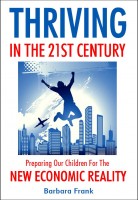….Like a few more booklets, which I’ll continue to give away free while they last. And then there are some of the books from the reading list of Life Prep for Homeschooled Teenagers. I don’t need them anymore because my kids are grown, and I hate to give them up because they’re great books, but I just don’t have room for them in our new little home. So stay tuned; I’ll be giving them away soon!
Tag Archives: books
The Downsizing Chronicles: Getting Rid of the Good Stuff
Over our previous moves, we got rid of a lot of stuff. What remained could be grouped into three categories:
Our Favorite Homeschooling Books
Our Favorite Toys
Our Favorite Mementos
Now, since we finished homeschooling our 18-year-old in June, you might be wondering why I kept so many homeschooling books. Well, for the same reason I wanted to keep the toys: for the grandchildren I may get someday.
Yep, I know it’s silly, but I just couldn’t let go of those things. Never mind that I don’t know if my grandchildren will be homeschooled. How can you get rid of Saxon 54? Or the Miller family series of Amish stories? Or the Holling Clancy Holling books?
Did I mention that books are heavy and take up lots of boxes?
Then there are the toys. For instance, every time I looked at the Little Tykes kitchen set, I remembered my eldest two children (then ages 3 and 2) excitedly watching the UPS man as he delivered the enormous box that contained their new kitchen set, which I had paid for with Huggies points. (Do they still have those?) How could I get rid of that?
As for the mementos, I find that I lose my memories unless I find items to trigger them. So it’s hard for me to give up the items because I’ll lose the memories. That explains why I kept little fuzzy sleepers and my kids’ favorite dolls and my son’s Sesame Street metal car collection (dang, those things are heavy!)
But we no longer have room for most of these treasures. And when I think about it, why should they sit in boxes and plastic containers when other children (children who exist right this moment, as opposed to my someday-grandchildren) could be getting use out of them?
That’s why we’ve been giving things away, and selling big things on Craig’s List, and just plain clearing most of it out. It is not easy. But I think it’s the right thing to do.
(Full disclosure: I didn’t get rid of all our best homeschooling books. I’m keeping the very best on our shelves, and that includes the Saxon 54, the Millers and the HCH books. But I’ve decided I’m not keeping books in boxes anymore. So I’m keeping what I can fit on the bookshelves, and the rest have to go!)
By the way, which of your homeschooling books are your favorites, the ones you’ll never let go of?
Pssst….Such a Deal!

Amazon does strange things. Here’s an example: for some reason, they’ve put one of our books on sale for almost half-price. We didn’t tell them to do this, but they’re free to set the price wherever they want. So if you’re looking for a great deal (and I don’t know how long this will last), check out two classic wildlife novels in one book: Shovelhorns, the Biography of a Moose, and Black Bruin, the Biography of a Bear, now only $7.58 (reg. $13.95), only at Amazon.com.
How Much Do You Spend on Homeschooling?
Have you ever added up what you spend to homeschool your children?
I used to, and still do. For the first few years (back in the 1980s), I spent around $500 a year to educate our two eldest children. I was buying books from A Beka back then, which isn’t cheap.
Once I had a few years of homeschooling under my belt, I became more interested in trying a variety of books and curriculum, so my annual expenditure actually went down a few hundred dollars or so. Most of what I did spend went to Rainbow Resource at each year’s homeschool convention; Christian Book Distributors, Miller Pads and Paper and Rod and Staff got a few dollars from us, too.
We spent only a few hundred dollars a year (even after having two more children) until the first year of high school for our eldest, when we signed her up for a correspondence school. We registered her brother for the same program the following year, and that was probably our most expensive year of homeschooling ever: $1000 total.
Before long, we jointly decided that the program involved too much memorization for tests, so we went back to doing our own thing. Since then, I doubt I’ve ever crossed the $300/year mark, no matter how many children I was homeschooling at one time.
I’m going to guess that you spend a similar amount. Am I right?
Whatever you spend, I’ll bet it’s not as much as the figures quoted for private and public education by writer Bill Walker from New Hampshire:
The Well School in Peterborough charges $7,360 for grades 1–4 and $8,800 for grades 5–8. Pine Hill Waldorf School in Wilton is $12,160 for grades 1–8. Monadnock Waldorf School costs $7800 for all grades. Here’s the fee schedule for St. Joseph Regional in Keene: “Tuition for grades K-8 for Catholics is $3,153, and $4,412 for non-Catholics. There is a 5 percent discount for one-time payment in full, and a discount for multiple children from a family.”
Now that’s private school tuition, and it far exceeds what our family has historically spent on homeschooling each year. But it’s nothing compared to what Walker says the public schools in New Hampshire spend: over $14,000 a year per student.
I have a feeling that far exceeds the most freespending homeschooling family in the country. But if you’re the exception, I’d love to hear where you’re spending all that cash! 🙂
My New Book is Almost Ready!
Last year I wrote about how I was buckling down to finish the book I’ve been working on for a long time. Well, it was worth it: the book will be out next month!
It’s called Thriving in the 21st Century: Preparing Our Children For The New Economic Reality, and I wrote it to explain what has changed in our economy and what specific things we can do to help prepare our children for a world of work much different than the one we grew up in.
Here’s what it will say on the back cover:
Today’s children will reach adulthood in an economic environment unlike anything the world has ever seen. The 21st century global economy is powered by an increasing rate of technological change as well as growing foreign competition; both are contributing to the high U.S. unemployment rate and stagnating American wages. How can we as parents prepare our children for success in this growing maelstrom that many are now calling “the new normal”?
In Thriving in the 21st Century, Barbara Frank demonstrates that we must move beyond the common wisdom of the 20th century that emphasized a college diploma and lifelong employment with a large company as the only way to success. Instead, we need to set our children on a new path, one that will help them not just survive, but thrive in the 21st century.
In this book, you’ll learn:
- The Seven Strengths your child will need to prosper in the 21st century, why they’re needed and how you can develop them in your children
- The most efficient (and increasingly popular) way to give your child those Seven Strengths
- Why public education has failed to prepare our children for the 21st century
- How we can help our children become the lifelong learners needed in a rapidly changing global economy
- The surprising truth about today’s colleges and universities
- How economic change is affecting a variety of career areas, and which of them are projected to grow dramatically in the coming years.
This book is packed with ideas and resources for raising our children to become adults who respond proactively when faced with economic challenges, and who can prosper during times of great change. We can help our children reach young adulthood ready and able to tackle the future with all its challenges. And that, of course, is the key: we must prepare our children for the future…not the past.
The book’s website is www.Thrivinginthe21stCentury.com. There’s already a lot of information there, and more to come in the near future.
I hope you’ll find this book inspiring and informative.

